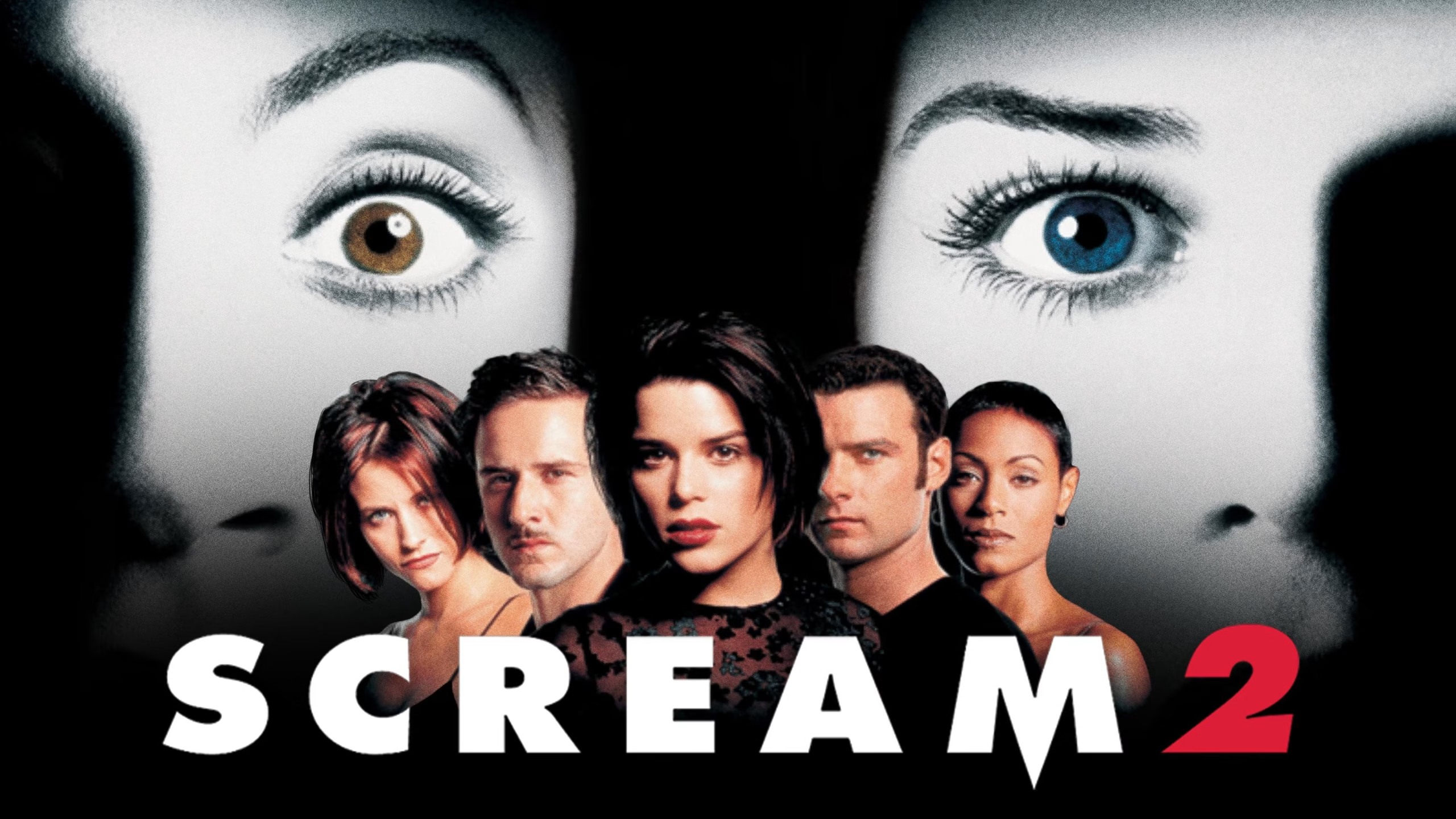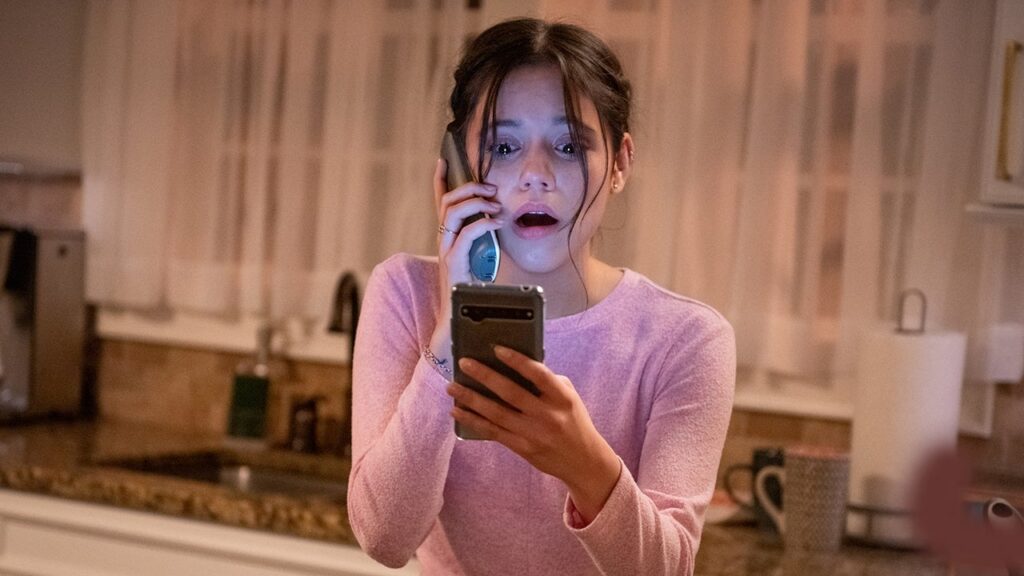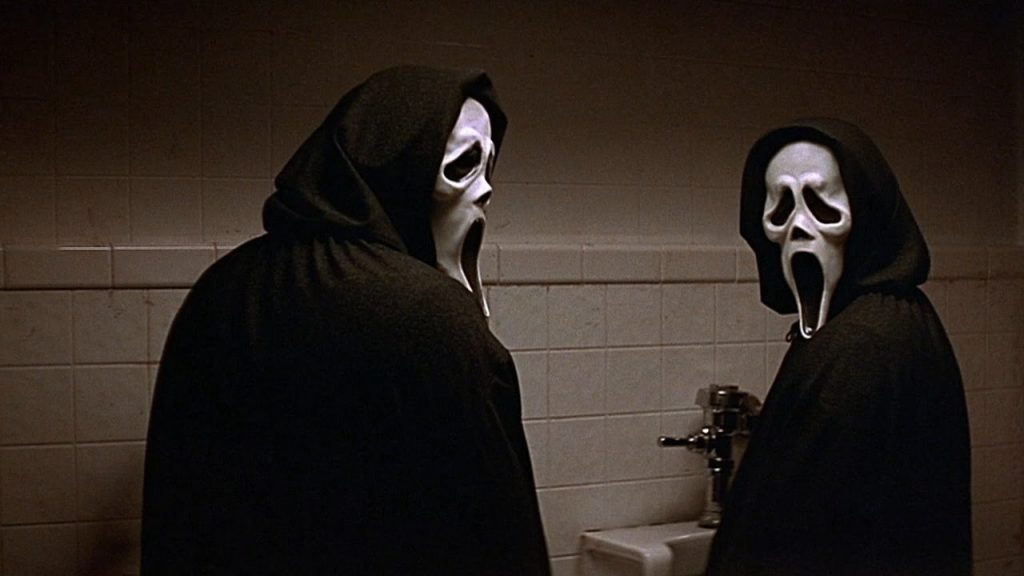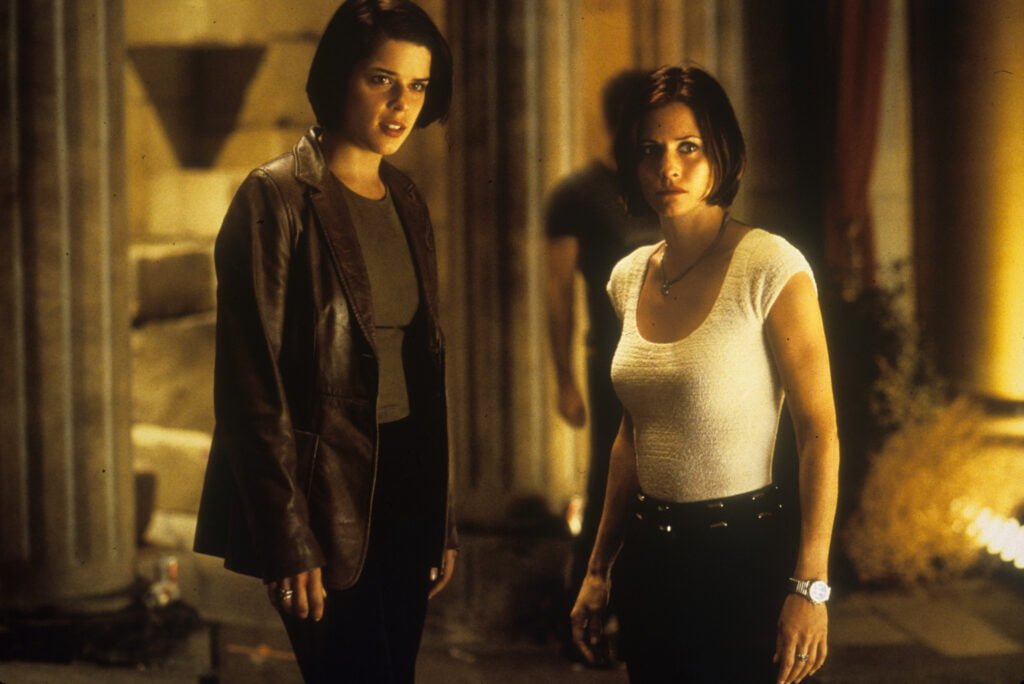Editorials
Why the Dinner Table is Horror’s Most Important Battleground

American Thanksgiving is right around the corner. When thinking about the holiday in relation to the horror genre, exactly two ideas came to me. The first was an intrusive thought about ThanksKilling that I quickly discarded. The second was the under-appreciated potency of the dinner table. Dinner scenes in horror are some of the most effective and disturbing moments in the genre, and they loom large in my mind. Or maybe I was just hungry.
Either way, I’d like to look at a few iconic horror movie dinner table scenes and explain why they work so well.

What the Dinner Table Means (To Normal People)
The dinner table is an important metaphor in fiction, be it on the page, the stage, or the screen. In his excellent book How to Read Literature Like a Professor, author Thomas C. Foster introduces the idea of dinner scenes being a metaphor for communion, in a secular sense. In short, he says that “breaking bread together is an act of sharing and peace, since if you’re breaking bread you’re not breaking heads.”
This idea is centered around the dinner table forming an instant mini-community, bonding the people sharing a meal. This is why your fantasy dinner party lineup is so important! From The Grinch joining the Whos to carve the roast beast in How the Grinch Stole Christmas to Seema getting over her hangups about Aidan and showing up to dinner with him and Carrie in And Just Like That, sharing food has long been a way for characters to broker peace and foster connections.

The Subversion of the Dinner Table In Horror
The horror genre, as it tends to do, twists that trope and subverts it into something dark and sinister. Breaking heads is definitely on the menu here.
Using such a familiar and comforting setting to either torment the viewer or lay the groundwork for torment to come, the horror genre can propel its metaphors to the forefront. Typically, the dinner table is used in horror to exaggerate the dynamics of a family to the point that they become grotesque parodies of themselves.
Family Tensions in You’re Next Dinner Scene
Look at the tour de force family dinner table sequence in 2011’s You’re Next. While nothing outright horrifying happens for many minutes at the Davison family’s anniversary dinner party, tensions around the table increase as the siblings keep sniping at each other and their partners, building to a bloody crescendo when one of those partners becomes the first victim of a group of home invaders. While that is the only bloody moment in this scene, their dinner table conversation lays the groundwork for how these people will continue to treat each other throughout their ordeal, and perhaps even hints at why said ordeal is happening in the first place.
Emotional Explosions in Hereditary’s Dinner Scene
Another terrific dinner table sequence comes in Hereditary when Annie finally snaps and delivers the iconic “I am your mother” speech, cementing in the character’s growing grief, paranoia, and resentment of her son in an explosion of white-hot rage that she can’t take back, kicking the movie’s series of unfortunate events into high gear.
Class Dynamics in The Menu’s Horror Dinner
Family dynamics are typically at the center of these moments, but class dynamics take a similar beating in The Menu, when Chef Slowik weaponizes the rich’s obsession with exclusivity and experiential cuisine to prevent them from realizing that they are in danger until it is much too late.
When Food Becomes the Horror
Another way for horror to subvert the dinner table trope is by turning the food itself into a source of discomfort and horror. This manifests in many ways, including sequences like the dinner party where Dr. Alan hallucinates a rotting hand emerging from his soup in The Serpent and the Rainbow, Michael eating maggots in The Lost Boys, or Vera’s wound squirting colorful pus into the custard in Braindead/Dead Alive.
Cannibalistic Horror in The Rocky Horror Picture Show
However, some of the best dinner table sequences combine the subversion of both tropes. For instance, The Rocky Horror Picture Show’s birthday party dinner sequence starts one way, in which people are awkwardly gathered around the table largely as a punishment for Janet sleeping with Rocky, but sees its tense disquietude ruptured when it is revealed that they have been eating the corpse of Eddie, who was killed earlier in the movie.
One of the most effective combinations of these two tropes comes in The Texas Chain Saw Massacre, when final girl Sally is forced to watch the twisted and unknowable dynamics play out between Leatherface and his family as they prepare to make her into their meal. The combination of food subversion (cannibalism) and family subversion (everything else) makes the scene so iconic and horrifying that it has been replicated in nearly every Texas Chainsaw movie since then.
Why Horror Dinner Scenes Are the Genre’s Battleground
What all this comes down to is that, while people don’t necessarily die there, the dinner table is nevertheless horror’s most important battleground. It highlights and reinforces the characters and dynamics at play in the center of its stories, setting the stage for whatever grisly events are about to unfold. While saying the right thing at a dinner party can feel like a life-or-death situation in real life, in the horror genre, it quite literally can mean the difference between dying horribly and surviving to see the end credits.
Editorials
‘The Woman in Black’ Remake Is Better Than The Original

As a horror fan, I tend to think about remakes a lot. Not why they are made, necessarily. That answer is pretty clear: money. But something closer to “if they have to be made, how can they be made well?” It’s rare to find a remake that is generally considered to be better than the original. However, there are plenty that have been deemed to be valuable in a different way. You can find these in basically all subgenres. Sci-fi, for instance (The Thing, The Blob). Zombies (Dawn of the Dead, Evil Dead). Even slashers (The Texas Chainsaw Massacre, My Bloody Valentine). However, when it comes to haunted house remakes, only The Woman in Black truly stands out, and it is shockingly underrated. Even more intriguingly, it is demonstrably better than the original movie.
The Original Haunted House Movie Is Almost Always Better
Now please note, I’m specifically talking about movies with haunted houses, rather than ghost movies in general. We wouldn’t want to be bringing The Ring into this conversation. That’s not fair to anyone.
Plenty of haunted house movies are minted classics, and as such, the subgenre has gotten its fair share of remakes. These are, almost unilaterally, some of the most-panned movies in a format that attracts bad reviews like honey attracts flies.
You’ve got 2005’s The Amityville Horror (a CGI-heavy slog briefly buoyed by a shirtless, possessed Ryan Reynolds). That same year’s Dark Water (one of many inert remakes of Asian horror films to come from that era). 1999’s The House on Haunted Hill (a manic, incoherent effort that millennial nostalgia has perhaps been too kind to). That same year there was The Haunting (a manic, incoherent effort that didn’t even earn nostalgia in the first place). And 2015’s Poltergeist (Remember this movie? Don’t you wish you didn’t?). And while I could accept arguments about 2001’s THIR13EN Ghosts, it’s hard to compete with a William Castle classic.
The Problem with Haunted House Remakes
Generally, I think haunted house remakes fail so often because of remakes’ compulsive obsession with updating the material. They throw in state-of-the-art special effects, the hottest stars of the era, and big set piece action sequences. Like, did House on Haunted Hill need to open with that weird roller coaster scene? Of course it didn’t.
However, when it comes to haunted house movies, bigger does not always mean better. They tend to be at their best when they are about ordinary people experiencing heightened versions of normal domestic fears. Bumps in the night, unexplained shadows, and the like. Maybe even some glowing eyes or a floating child. That’s all fine and dandy. But once you have a giant stone lion decapitating Owen Wilson, things have perhaps gone a bit off the rails.

The One Big Exception is The Woman in Black
The one undeniable exception to the haunted house remake rule is 2012’s The Woman in Black. If we want to split hairs, it’s technically the second adaptation of the Susan Hill novel of the same name. But The Haunting was technically a Shirley Jackson re-adaptation, and that still counts as a remake, so this does too.
The novel follows a young solicitor being haunted when handling a client’s estate at the secluded Eel Marsh House. The property was first adapted into a 1989 TV movie starring Adrian Rawlings, and it was ripe for a remake. In spite of having at least one majorly eerie scene, the 1989 movie is in fact too simple and small-scale. It is too invested in the humdrum realities of country life to have much time to be scary. Plus, it boasts a small screen budget and a distinctly “British television” sense of production design. Eel Marsh basically looks like any old English house, with whitewashed walls and a bland exterior.
Therefore, the “bigger is better” mentality of horror remakes took The Woman in Black to the exact level it needed.

The Woman in Black 2012 Makes Some Great Choices
2012’s The Woman in Black deserves an enormous amount of credit for carrying the remake mantle superbly well. By following a more sedate original, it reaches the exact pitch it needs in order to craft a perfect haunted house story. Most appropriately, the design of Eel Marsh House and its environs are gloriously excessive. While they don’t stretch the bounds of reality into sheer impossibility, they completely turn the original movie on its head.
Eel Marsh is now, as it should be, a decaying, rambling pile where every corner might hide deadly secrets. It’d be scary even if there wasn’t a ghost inside it, if only because it might contain copious black mold. Then you add the marshy grounds choked in horror movie fog. And then there’s the winding, muddy road that gets lost in the tide and feels downright purgatorial. Finally, you have a proper damn setting for a haunted house movie that plumbs the wicked secrets of the wealthy.
Why The Woman in Black Remake Is an Underrated Horror Gem
While 2012’s The Woman in Black is certainly underrated as a remake, I think it is even more underrated as a haunted house movie. For one thing, it is one of the best examples of the pre-Conjuring jump-scare horror movie done right. And if you’ve read my work for any amount of time, you know how positively I feel about jump scares. The Woman in Black offers a delectable combo platter of shocks designed to keep you on your toes. For example, there are plenty of patient shots that wait for you to notice the creepy thing in the background. But there are also a number of short sharp shocks that remain tremendously effective.
That is not to say that the movie is perfect. They did slightly overstep with their “bigger is better” move to cast Daniel Radcliffe in the lead role. It was a big swing making his first post-Potter role that of a single father with a four-year-old kid. It’s a bit much to have asked 2012 audiences to swallow, though it reads slightly better so many years later.
However, despite its flaws, The Woman in Black remake is demonstrably better than the original. In nearly every conceivable way. It’s pure Hammer Films confection, as opposed to a television drama without an ounce of oomph.
Editorials
Is ‘Scream 2’ Still the Worst of the Series?

There are only so many times I can get away with burying the lede with an editorial headline before someone throws a rock at me. It may or may not be justified when they do. This article is not an attempt at ragebaiting Scream fans, I promise. Neither was my Scream 3 article, which I’m still completely right about.
I do firmly believe that Scream 2 is, at the very least, the last Scream film I’d want to watch. But what was initially just me complaining about a film that I disregard as the weakest entry in its series has since developed into trying to address what it does right. You’ve heard of the expression “jack of all trades, master of none”, and to me Scream 2 really was the jack of all trades of the franchise for the longest time.
It technically has everything a Scream movie needs. Its opening is great, but it’s not the best of them by a long shot. Its killers are unexpected, but not particularly interesting, feeling flat and one-dimensional compared to the others. It has kills, but only a few of them are particularly shocking or well executed. It pokes fun at the genre but doesn’t say anything particularly bold in terms of commentary. Having everything a Scream movie needs is the bare minimum to me.
But the question is, what does Scream 2 do best exactly? Finding that answer involves highlighting what each of the other sequels are great at, and trying to pick out what Scream 2 has that the others don’t.

Scream 3 Is the Big Finale That Utilizes Its Setting Perfectly
Scream as a series handily dodges the trap most horror franchises fall into: rehashing and retreading the same territory over and over. That’s because every one of its films are in essence trying to do something a little different and a little bolder.
Scream 3 is especially bold because it was conceived, written, and executed as the final installment in the Scream series. And it does that incredibly well. Taking the action away from a locale similar to Woodsboro, Scream 3 tosses our characters into the frying pan of a Hollywood film production. Despite its notorious number of rewrites and script changes (one of which resulted in our first solo Ghostface), it still manages to be a perfect culmination of Sidney Prescott’s story.
I won’t repeat myself too much (go read my previous article on the subject), but 3 is often maligned for as good a film as it turned out to be. And for all of its clunkier reveals, and its ghost mom antics, it understands how to utilize its setting and send its characters off into the sunset right.
Scream 4’s Meta Commentary Wakes Scream from a Deep Sleep
As Wes Craven’s final film, Scream 4 has a very special place in the franchise. It was and still is largely adored for bringing back the franchise from a deep 11-year sleep. With one of the craziest openings in any horror film, let alone a Scream film, it sets the tone for a bombastic return and pays off in spades with the journey it takes us on.
Its primary Ghostface Jill Roberts is a fan favorite, and for some people, she is the best to ever wear the mask. Its script is the source of many memorable moments, not the least of which is Kirby’s iconic rapid-fire response to the horror remakes question. And most importantly, it makes a bold and surprisingly effective return for our main trio of Sidney, Dewey, and Gale, whose return didn’t feel trite or hammy when they ended up coming back to Woodsboro for more.
Craven’s work on 4 truly understands the power its predecessors had exerted on the horror genre, both irreverent in its metacommentary and celebratory of the Scream series as a whole. The film is less of a love letter to the genre and more of a kicking down of the door to remind people what Scream is about. 4’s story re-established that Scream isn’t going away, no matter how long it takes for another film, and no matter how many franchises try to take its place.

Scream 5 & 6 Is Radio Silence’s Brutal and Bloody Attitude Era
Put simply, Scream 5 and 6’s strong suit was not its characters. It was not its clever writing. The Radio Silence duology in the Scream series excelled in one thing: beating the hell out of its characters.
Wrestling fans (of which there is an unsurprising amount of crossover with horror fans) will know why I call it the Attitude Era. Just like WWE’s most infamous stretch of history, Radio Silence brought something especially aggressive to their entries. And it’s because these films were just brutal. Handing the reins to the series, Bettinelli-Olpin and Gillet gifted a special kineticism to the classic Scream chase sequences, insane finales, and especially its ruthless killers.
All five of the Ghostfaces present in 5 and 6 are the definition of nasty. They’re unrelenting, and in my humble opinion, the freakiest since the original duo of Stu Macher and Billy Loomis. Getting to hear all the air get sucked out of the room as Dewey is gutted like a fish in 5 was still an incredible moment to experience in theatres, and it’s something I don’t think would have happened if the films were any less mean and any less explosively violent.

So, What Does Scream 2 Do Best Exactly?
So now, after looking at all these entries and all of their greatest qualities, what does Scream 2 have that none of the others do? What must I concede to Scream 2?
Really great character development.
Film is a medium of spectacle most of the time, and this is reflected in how we critique and compliment them. It affects how we look back on them, sometimes treating them more harshly than they deserve because they don’t have that visual flash. But for every ounce of spectacle Scream 2 lacks, I have to admit, it does an incredible job of developing Sidney Prescott as a character.
On a rare rewatch, it’s clear Neve Campbell is carrying the entirety of Scream 2 on her back just because of how compelling she makes Sidney. Watching her slowly fight against a tide of paranoia, fear, and distrust of the people around her once more, watching her be plunged back into the nightmare, is undeniably effective.
It’s also where Dewey and Gale are really cemented as a couple, and where the seeds of them always returning to each other are planted. Going from a mutual simmering disrespect to an affectionate couple to inseparable but awkward and in love is just classic; two people who complete each other in how different they are, but are inevitably pulled back and forth by those differences, their bond is one of the major highlights throughout the series.

Maybe All the Scream Films Are Just Good?
These three characters are the heart of the series, long after they’ve been written out. I talk a big game about how Scream 3 is the perfect ending for the franchise, but I like to gloss over the fact that Scream 2 does a lot of the legwork when it comes to developing the characters of Dewey, Gale, and especially Sidney.
Without 2, 3 just isn’t that effective when it comes to giving Sidney her long deserved peace. Without 2, the way we see Sidney’s return in 4 & 5 doesn’t hit as hard. All of the Scream movies owe something to Scream 2 in the same way they owe something to the original Scream. I think I’ve come to a new point of view when it comes to the Scream franchise: maybe there is no bad entry. Maybe none of them have to be the worst. Each one interlinks with the others in their own unique way.
And even though I doubt I will ever really love Scream 2, it has an undeniable strength in its character writing that permeates throughout the whole franchise. And that at the very least keeps it from being the worst Scream film.
























